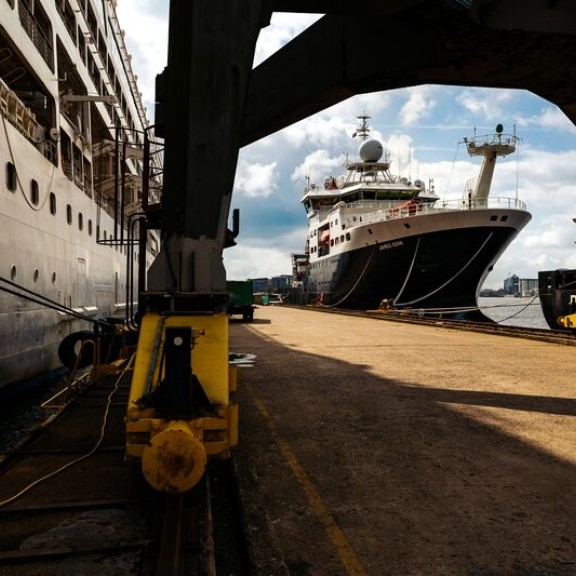
Port of Amsterdam opts for clean shipping
Port of Amsterdam, as a leader in the transition to a sustainable society, wants to accelerate making shipping and the maritime sector more sustainable. Today it is publishing the Clean Shipping Vision with clear targets for making shipping more sustainable.
Port of Amsterdam is supported in this by the port business community and the maritime industry.
The contribution of greenhouse gas emissions from shipping to global warming totals about three per cent. The transport of goods by water is still growing and, although this mode of transport is one of the most energy-efficient in terms of CO2 emissions per transported load, the shipping industry is lagging behind in terms of sustainability. All the more reason for Port of Amsterdam to use its leading role to accelerate sustainable shipping.
Reduction targets
In the Clean Shipping Vision, Port of Amsterdam sets reduction targets for greenhouse gases such as CO2. By 2030, sea cruises at the quay should operate emission-free and this is to be expanded to all shipping in the port of Amsterdam by 2050. In doing so, Port of Amsterdam is making a significant contribution to improving the air quality in the city and surrounding environment of the North Sea Canal Area and to the Paris climate challenge.
Milembe Mateyo, Port of Amsterdam’s State Harbour Master: ‘The climate crisis is urgent, so we must act now. To limit global warming, a switch from fossil fuels to sustainable fuels is needed, including in the shipping industry. With this vision, we want to set an example and, together with our partners, be frontrunners in accelerating and facilitating cleaner shipping.’
Three sustainability pillars
Increasing the sustainability of shipping rests on three pillars:
The provision in the port of sustainable marine fuels such as hydrogen and methanol, and the promotion of their use, ensures the greatest reduction in emissions from both sea-going and inland navigation vessels. Port of Amsterdam itself has already taken a number of actions. For example, the company's own patrol fleet is being converted to run 100 per cent on biodiesel. The new executive vessel, which will enter service in 2023, will run on hydrogen.
A second pillar is the use of port technology, such as ship-to-shore power, and the eventual mandatory use of it. Alternative technologies that reduce or capture greenhouse gas emissions and air pollutants are also being invested in.
The third pillar is to optimise ship visits by improving the digital infrastructure, as efficient planning of ships reduces the time spent in port and thus unnecessary emissions. When the IJmuiden sea lock comes into operation, it will also be possible to lock more efficiently, for example by allowing more ships to pass through together.
Emission-free shipping in the port by 2050
Alderman Egbert de Vries (Harbour): ‘The port of Amsterdam is a logistics hub and plays an important role in the European region. In carrying out this role, we do everything possible to ensure that the port is at the forefront of sustainability, both in industry and shipping. The Clean Shipping Vision ensures that the port works a little smarter, faster and cleaner every day.’
These efforts and measures should lead to a reduction of more than 20% in shipping emissions by 2030 compared to 2018. By 2050, shipping in the port of Amsterdam should be completely emission-free.
Kees Noorman, director of the ORAM Region Business Association: ‘The Amsterdam port business community also feels a responsibility to contribute to the sustainability of the maritime sector. We, therefore, support this Clean Shipping Vision with objectives that will give the port of Amsterdam and its entrepreneurs a leading role in the transition towards a sustainable port.’